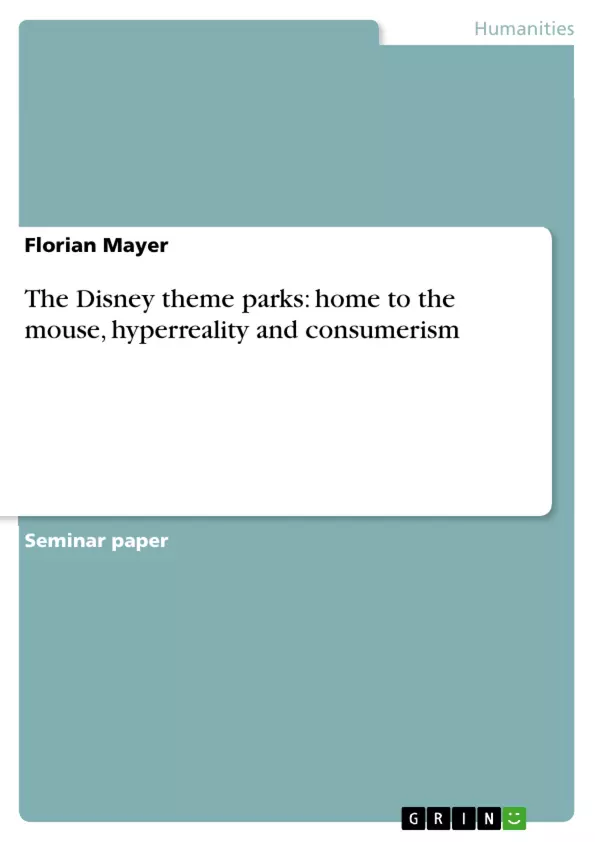In many parts of our world today people dream a dream of magic and illusion, prosperity and happiness, which is essentially an American dream, exported by the wizards of branding, by companies like McDonald′s, Nike, Coca-Cola and especially The Walt Disney Company (WDC). Known for being `the inventor of modern branding′ and `modern synergy′, the Disney company `has managed to insinuate its characters, stories, and image as good, clean, fun enterprise into the consciousness of millions around the earth′.
The WDC today boasts revenue of more than $25 billion from its operations in media networks, consumer products, studio entertainment, Internet, and parks and resorts, and employs 120,000 people worldwide. Furthermore, it can be seen as `the single most powerful and influential force in the globalization of Western culture'. Having themed parks in California (Disneyland, Anaheim), Florida (Walt Disney World, Orlando), France (Disneyland and Disney Studios Paris), Japan (Tokyo Disney Resort), China (Hong Kong Disneyland), and as rumours suggest having plans for parks in Shanghai and Delhi, Disney spreads its `value-laden environments′ across the world. Thereby, it is `extending and expanding Classic Disney - `the Disney universe′ or `Disney vision′ - into a material and physical existence, as well as ′providing a strong dose of All-American ideology′. Since the theme parks `contribute significantly to Disney′s overall corporate goals, providing ongoing revenues and promotion for other parts of the corporate empire′ it is worthwhile to closer examine the parks which are viewed by many observers as `showcases for postmodernism′ and `panegyrics to capitalism′.
Inhaltsverzeichnis (Table of Contents)
- Introduction to Disney's world
- The Disney theme parks: home to the mouse, hyperreality and consumerism
- The theme parks – more real than reality?
- I shop therefore I am - real shopping in hyperreality
- Disney Nature and Disney History – more real than reality!
Zielsetzung und Themenschwerpunkte (Objectives and Key Themes)
This text explores the influence of the Walt Disney Company, specifically its theme parks, on contemporary culture, analyzing how they embody concepts like hyperreality, consumerism, and the construction of idealized narratives.
- The role of hyperreality and simulations in shaping consumer experiences
- The relationship between theme parks and the commodification of experiences and memories
- The impact of Disney's idealized representations on the perception of reality and history
- The potential for Disney's constructed narratives to reinforce existing societal beliefs
- The analysis of Disney's theme parks as showcases for postmodernist ideas and capitalist ideology
Zusammenfassung der Kapitel (Chapter Summaries)
- The introductory chapter establishes the vast reach and influence of The Walt Disney Company, highlighting its global presence and the role of its theme parks in promoting Western culture and American ideals.
- The second chapter delves into the concept of hyperreality, arguing that Disney's theme parks offer a simulated experience that is more real than the reality it represents.
- The third chapter examines the theme parks' role in promoting consumerism, exploring how the blend of entertainment and commerce encourages impulse buying and reinforces the idea that "I shop therefore I am."
Schlüsselwörter (Keywords)
The key terms and concepts explored in this text include hyperreality, simulation, consumerism, commodification of experiences, theme parks, Disney, postmodernism, capitalism, and idealized representations.
- Citar trabajo
- Florian Mayer (Autor), 2002, The Disney theme parks: home to the mouse, hyperreality and consumerism, Múnich, GRIN Verlag, https://www.grin.com/document/9036



